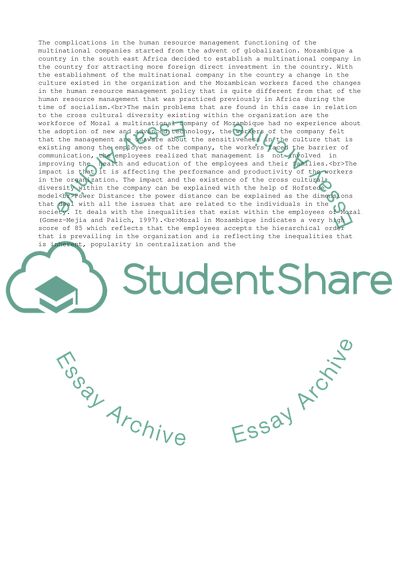Cite this document
(“Human resource management and cultural diversity: a case study in Essay”, n.d.)
Retrieved de https://studentshare.org/business/1673839-human-resource-management-and-cultural-diversity-a-case-study-in-mozambique
Retrieved de https://studentshare.org/business/1673839-human-resource-management-and-cultural-diversity-a-case-study-in-mozambique
(Human Resource Management and Cultural Diversity: A Case Study in Essay)
https://studentshare.org/business/1673839-human-resource-management-and-cultural-diversity-a-case-study-in-mozambique.
https://studentshare.org/business/1673839-human-resource-management-and-cultural-diversity-a-case-study-in-mozambique.
“Human Resource Management and Cultural Diversity: A Case Study in Essay”, n.d. https://studentshare.org/business/1673839-human-resource-management-and-cultural-diversity-a-case-study-in-mozambique.


